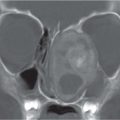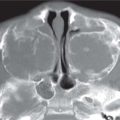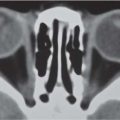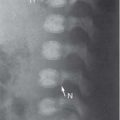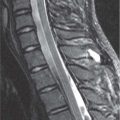Sutures and Fontanelles
The width of the sutures is highly variable in neonates; therefore, measurements are not reliable. Plain film, ultrasound (US), and computed tomography (CT) can be used for assessment of sutural patency.
The coronal suture is the first to manifest widening in response to increased intracranial pressure (ICP; upper limit of normal above 2 years of age is 2 mm). With an expanding mass in the occipital region, the lambdoid suture is the predominant suture affected. The principal sutures remain visible in adulthood as fine, interdigitated, radiolucent lines. The mendosal suture closes during the first months of life. Metopic fusion (frontal suture) may normally occur as early as 3 months of age, and complete fusion occurs by 9 months of age. The suture remains open after the age of 2 years in approximately 5% of cases.
In the occipital bone at birth, three primary sutures can be identified. Occipital and innominate sutures start to fuse at the age of 0 to 3 years, and complete closure is at 4 years. The mendosal suture may be open until 6 years of age.
Craniosynostosis: The premature closure of sutures during the first 3 years of life can lead to cranial growth abnormalities (see “Craniosynostosis”). Sutural fusions occurring after 3 years of age are usually of no clinical importance. “Passive” premature synostosis results from the rapid shunting of hydrocephalus and is occasionally associated with microcephaly.
Accessory sutures: These may occur unilaterally or symmetrically in the posterior parietal bones and occipital squamae.
Wormian bones: These are most often idiopathic, occurring most commonly in the lambdoid and occipitomastoid sutures.
The differential diagnosis includes cleidocranial dysostosis, osteogenesis imperfecta, and hypothyroidism. The following normal structures may be mistaken for fractures:
Mendosal suture, metopic suture, synchondroses at the skull base (intersphenoidal, spheno-occipital, and posterior intraoccipital synchondroses), accessory sutures
Fibrous strips in the parietal bones of young infants; these faint radiolucent lines (unilateral or symmetric) disappear within a few weeks.
The fontanelles and the timing of their bony fusion are as follows:
Anterior fontanelle: 12–15 months
Anterolateral fontanelle: by 3 months
Posterior fontanelle: by 2 months
Posterolateral fontanelle: by 2 years.
Accessory fontanelles (also called cranium bifidum) occur in the midline, as follows:
Metopic fontanelle in the frontale suture
An additional fontanelle below the metopic fontanelle at the level of the glabella
Parietal fontanelle in the posterior sagittal suture
Large, often symmetrical parietal “foramina” are considered a normal variant.
Premature closure of the anterior fontanelle:
May be a normal harmless variant if the coronal and sagittal sutures are patent.
Is pathologic if there is any premature sutural fusion; there is possible associated bulging of the fontanelle.
May be mimicked by a fontanelle (inca) bone (harmless variant).
Delayed closure of the anterior fontanelle often implies defective ossification when associated with marked suture widening and wormian bones.
The author would like to thank R. Nijland and T. de Jong for their assistance in preparing this section.
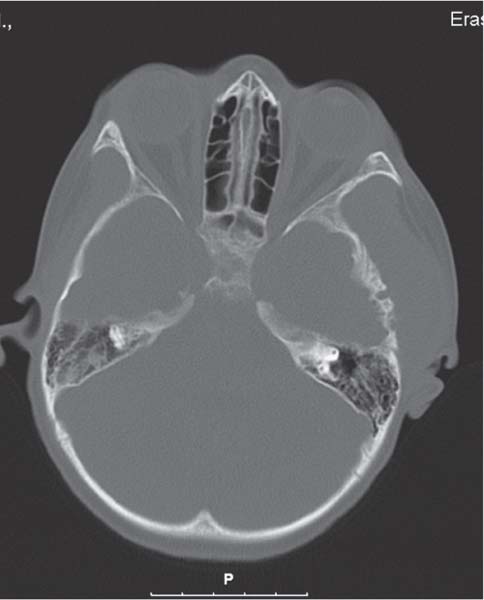
Stay updated, free articles. Join our Telegram channel

Full access? Get Clinical Tree


